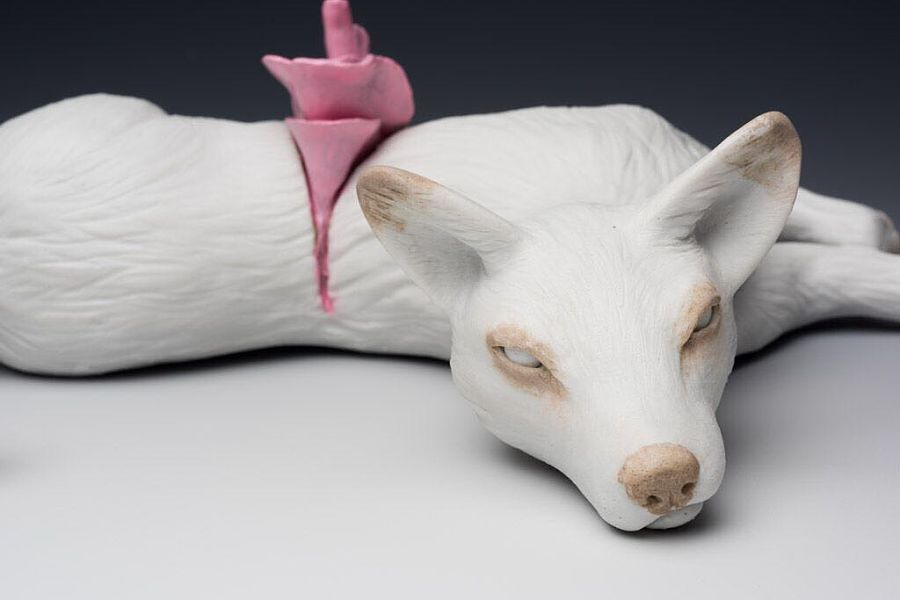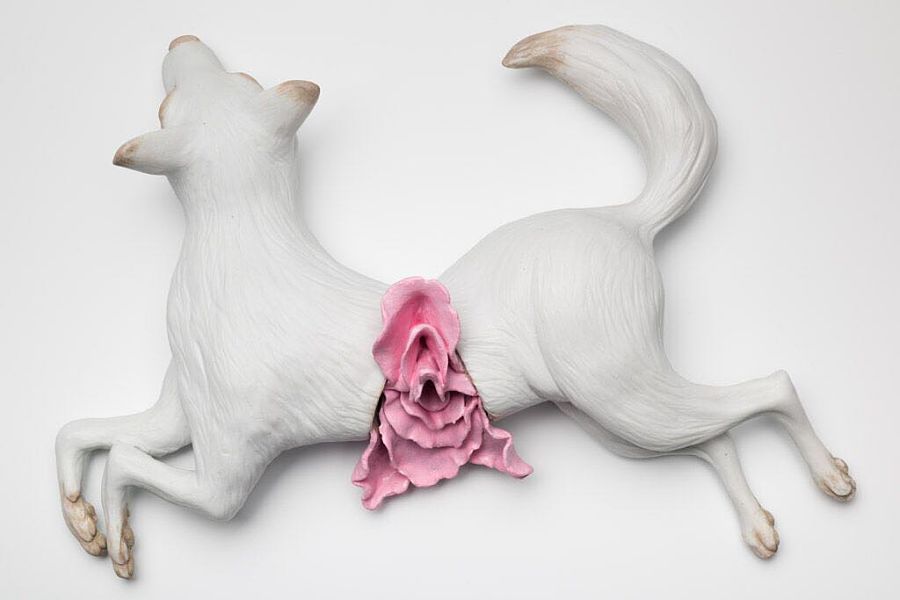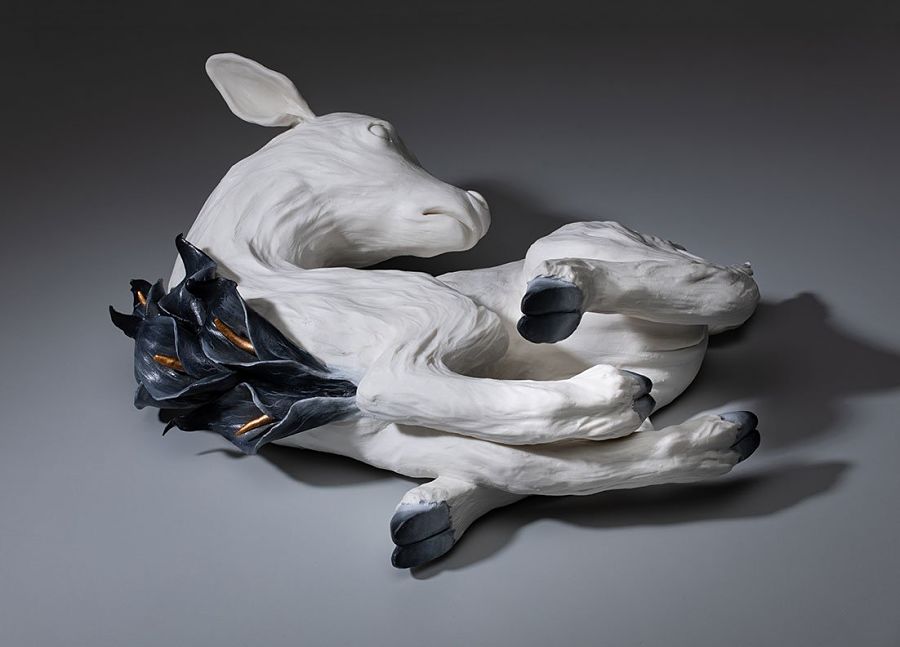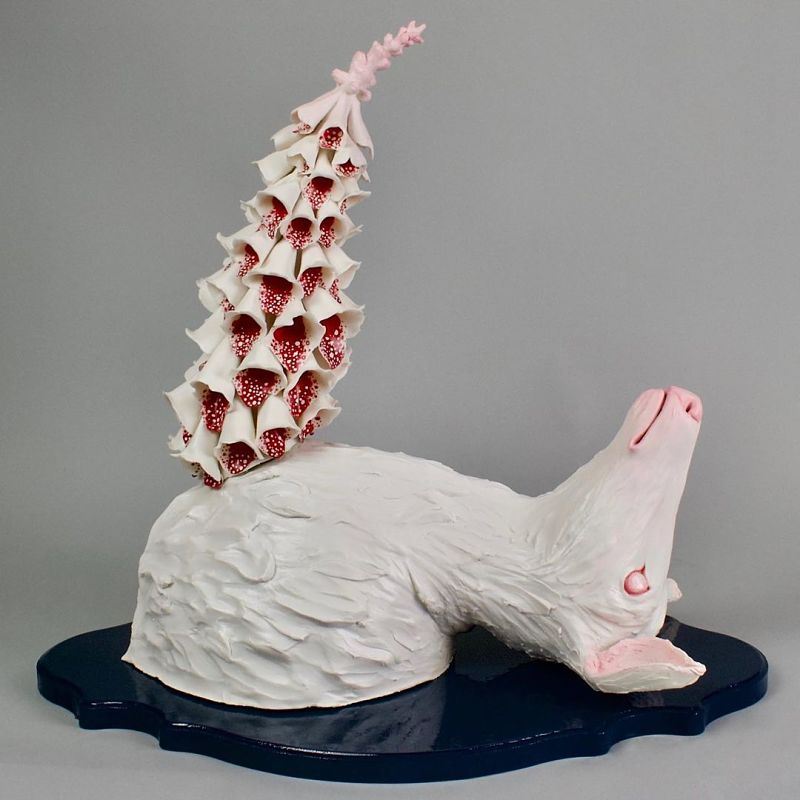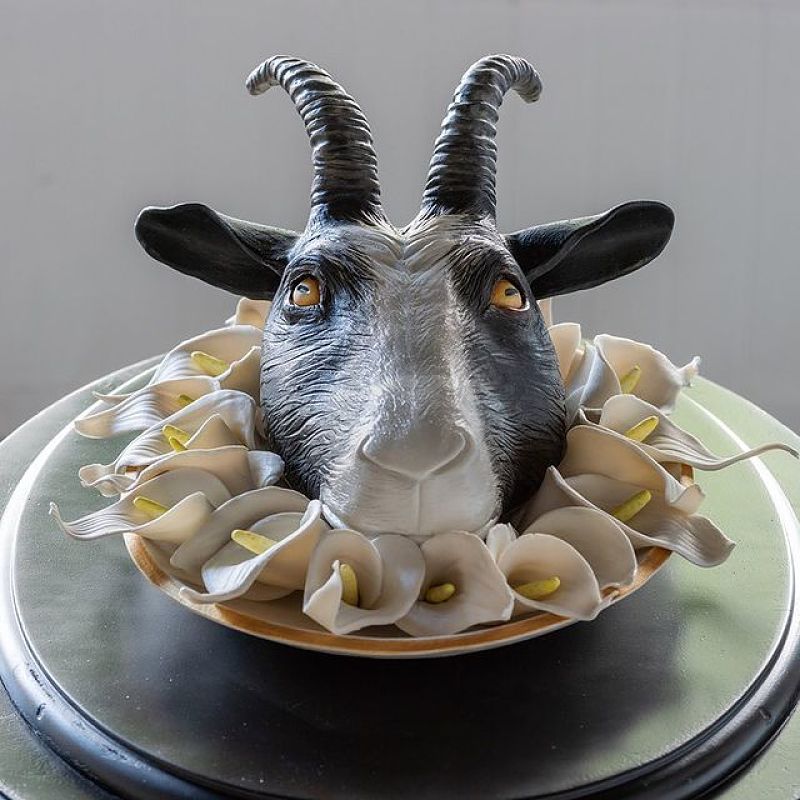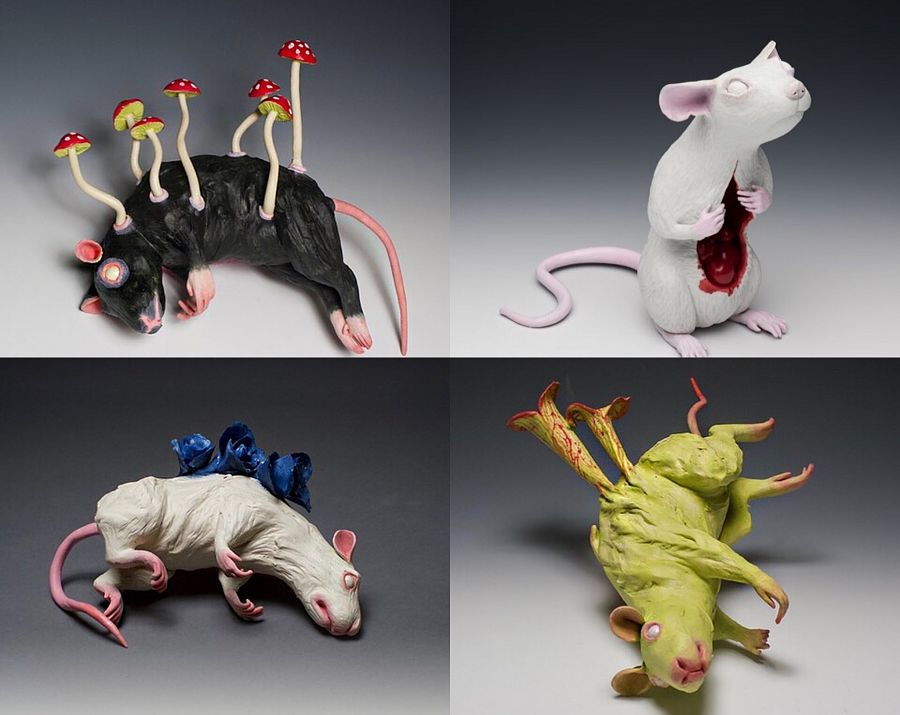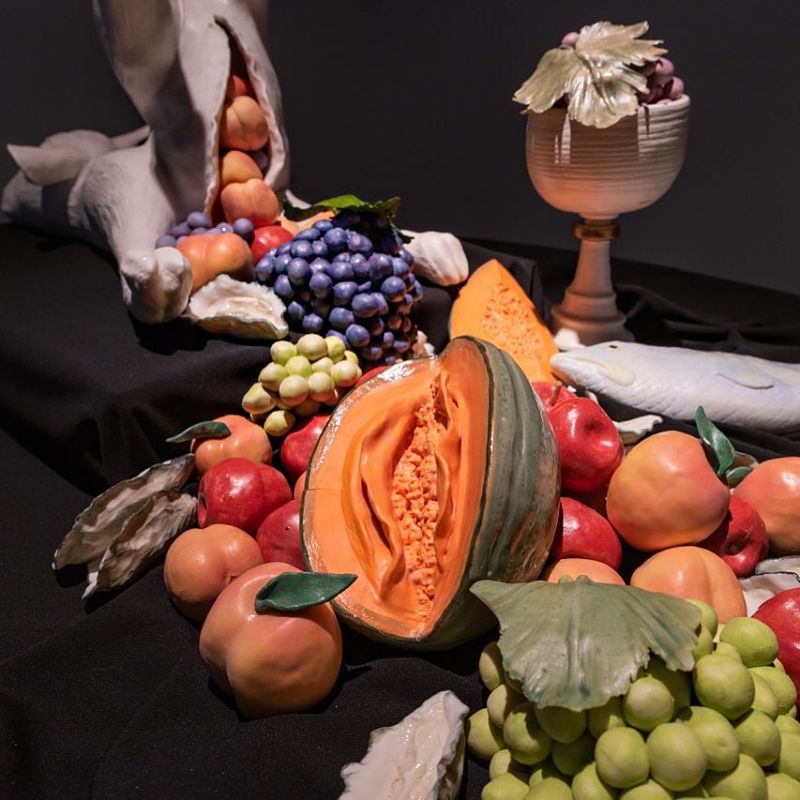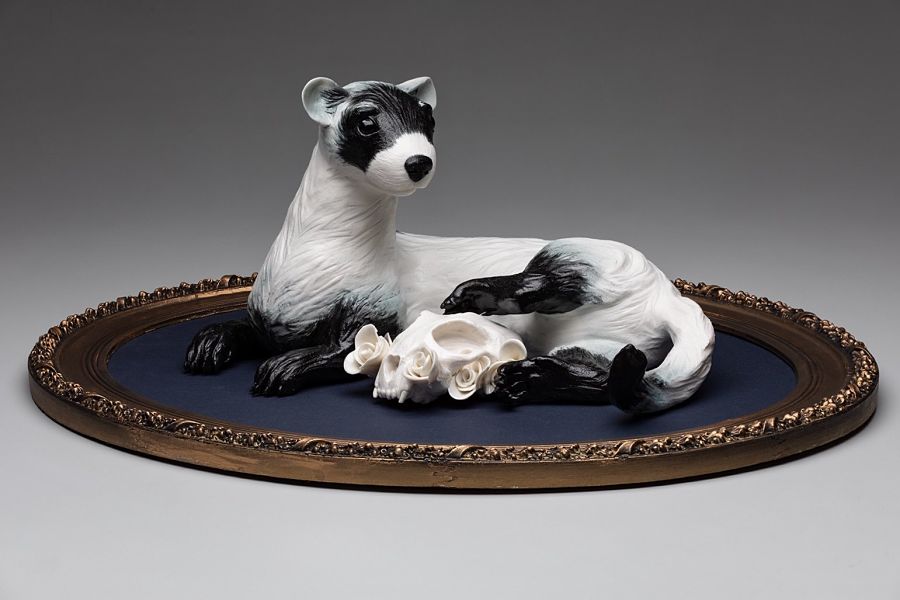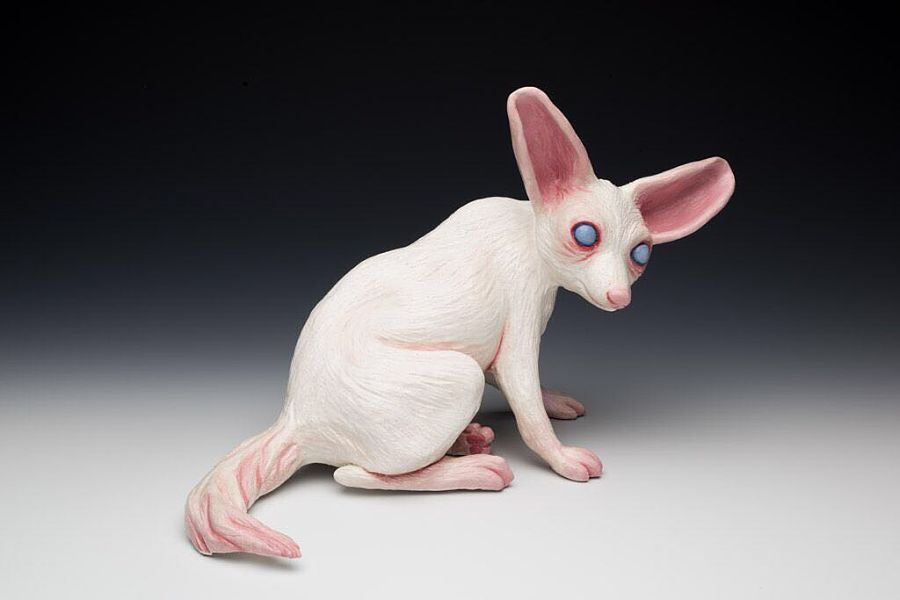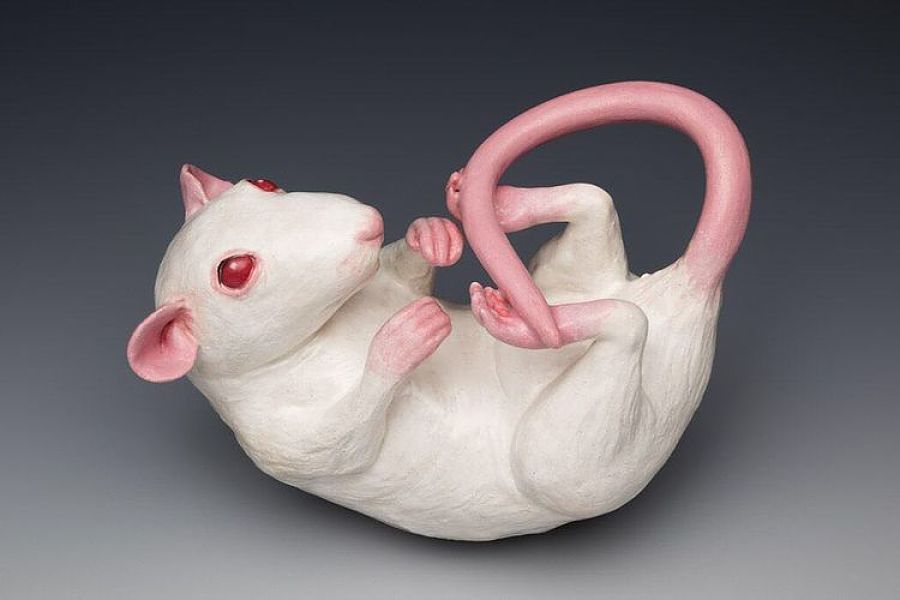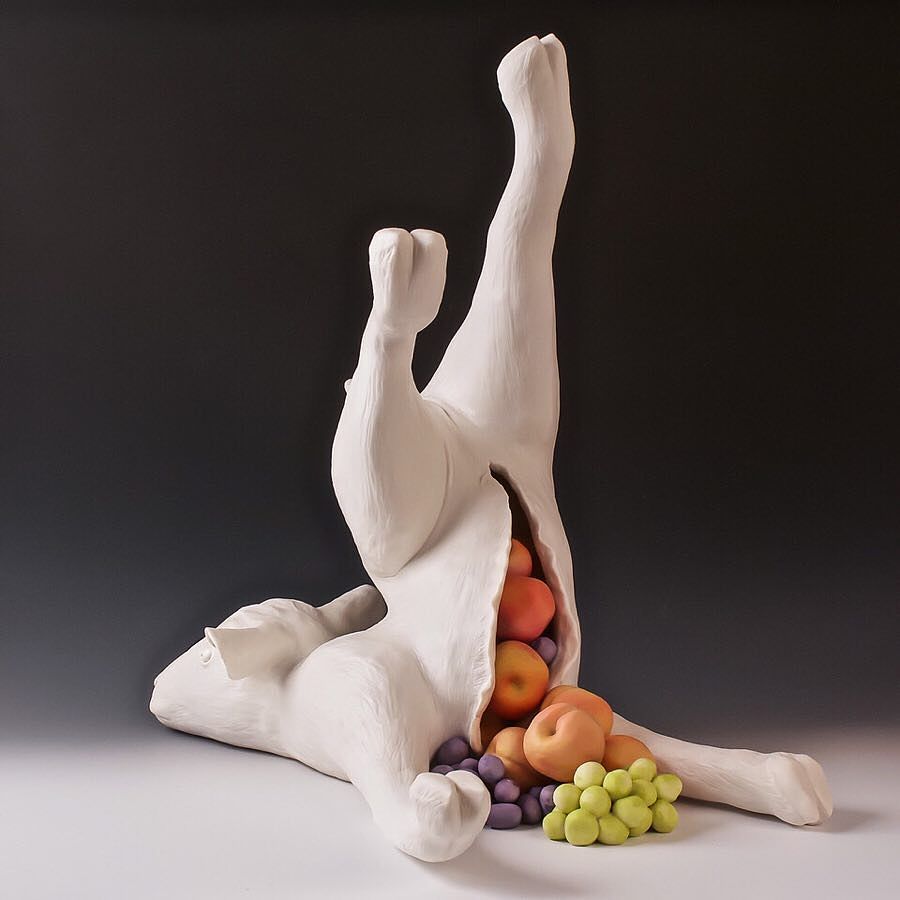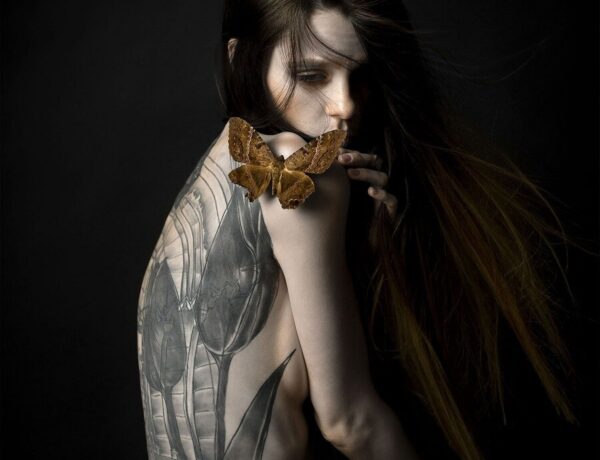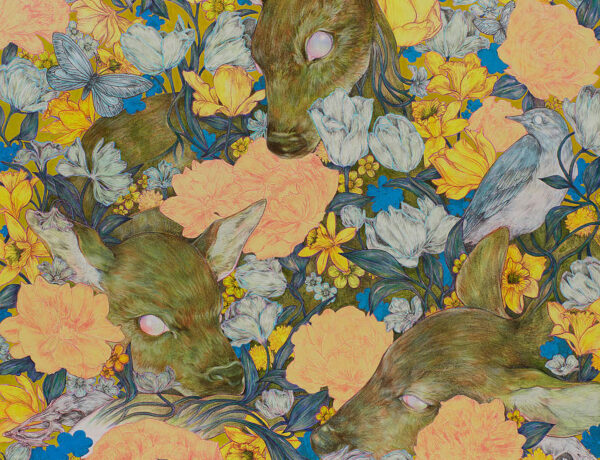Before I had the pleasure of conducting my interview with Lorren Lowrey, I did some research. Upon investigation, I was further enamoured and allured by the symbolism in her works. It speak to me on many personal levels. Both in regards to the call back of memento mori paintings, and in our discussions of human frailty, as well as our own mutual understanding of mortality with the loss of my mother in February, and Lorren losing her father in her youth.
It is no wonder, what with her own background in a religious cult that Lorren Lowrey calls forth such rich and textural symbolism, warning us of what moral corruptibility has wrought within our society.
Lorren Lowrey’s sculptures hearken to 17th century Golden era Dutch art, when old monarchists and Catholic traditions were being broken up, and art had to transmute itself. However, Lorren firmly plants us in the 21st century with her own artistic vision and voice.
Porcelain is so fragile yet impenetrable, it is the perfect vehicle for expressing the personal tether between growth and pain.
After doing my research into your practice, I’m curious why you are so influenced by 17th Century Dutch still life paintings? And secondly, I’m very curious as to why you chose the Luciferin ‘all seeing eye’ logo on your website?
I’ve always been interested in the animal form as a subject matter, but I also want to use the form to tell a story. That’s what initially drew me to the 17th century Dutch still life paintings for inspiration. I found the subject matter visually interesting what with the arrangements of food, flowers and dead animals. Then to learn that all of those objects had intentional symbolic meaning was a light-bulb moment for me. For example, the use of momento mori objects such as skulls, clocks, or an hourglass to remind the viewer of their own mortality and the fleeting nature of life. I find that use of symbolism so incredibly poetic and I hope I can honor that tradition in my own work.
As for the sigil on Lucifer on my website, it again relates to symbolism and hidden meanings. It’s a magical symbol that holds connections to greater supernatural power. I am a member of the Satanic Temple, a nontheistic organization that “encourages benevolence and empathy, reject tyrannical authority, advocate practical common sense, oppose injustice, and undertake noble pursuits”.
The Magick of Ceramics
I have no experience in your medium, Lorren. Can you take a moment to educate me and perhaps some of our readers about what makes it so different than say sculpting with clay?
Porcelain is clay, so there is no difference technically. Porcelain just happens to be a more complicated material for sculpting because of it’s lack of grog (sand) in the body of the clay. I’ve used other types of clay, but ultimately keep returning to porcelain because because of it’s delicate yet austere qualities. A material so fragile yet impenetrable is a perfect vehicle for expressing the personal tether between growth and pain. I also love that it is reminiscent of ancient marble sculptures.
Spiritualism or a lack thereof
So I read somewhere that you stated that you are an Atheist? Do you feel as though your early years in a religious cult affect the symbolism in your works?
I am an Atheist yes. The philosophy of religion can be really quite beautiful and I totally understand why people feel they need it, but for me, organized religion has many toxic qualities that intentionally hurts and ostracizes some people. I feel like with most organized religion it’s all or nothing. Like most children who grew up attending church (or a cult) I took all of what I was taught as truth. As I got older, I was faced with contradictions between what I had come to believe and what I was experiencing. It became apparent that the Bible was being interpreted in a number of ways to fit a purpose or even a specific agenda.
My upbringing has had a huge impact on my art, absolutely. I don’t know if I would be so interested in religious symbolism if I hadn’t had that experience growing up. I don’t approach each work with a specific intent like I must have this symbol from that to mean this. The imagery I use and depict is simply a call back to my time within a religious cult. A tool within my wheelhouse of experiences to be used to tell an emotive sometimes evocative story. Other symbols are in jest. Poking fun at the seriousness of the art world. Often you’ll find hidden labias or sexual innuendos in my work, simply because I think it’s funny.
The imagery I use and depict is simply a call back to my time within a religious cult. A tool within my wheelhouse of experiences to be used to tell an emotive sometimes evocative story.
The Otherness
So this ‘Otherness‘ you mention. I’m curious as to how you define it. Does it directly affect your works and yourself?
Absolutely! Otherness to me is just being an outsider. My entire life I’ve always felt like an outsider and had a sense of not belonging. Growing up in a religious cult, we were not allowed to engage with people outside of the church, so my formative years were spent being ostracized from society. Then into my young adult years, coming to the realization about my sexuality was another outsider moment. The fear a person experiences when “coming out” is indescribable. Even if society has come to accept it more, that feeling of otherness will always be there. As it relates to me as I’ve said before, I don’t sit down and approach each of my works with the mindset of working otherness into it. I want to evoke a sense of familiarity with my audience. That it’s okay to feel other because there are other others out there. They may be going through, feeling and thinking other just like you too. Make sense?
Legacy
Five hundred years have passed. What lasting impact do you want to leave as a legacy for other artists and people in general to follow? For a follow up to dipping one’s toes into the infinity pool. What are your greatest aspirations for yourself and your works?
What a truly incredible question! Tying it back to otherness, the lasting impact I want to leave for other artists is that it’s okay to not fit in. Don’t make art to please other people, make it for yourself. Be courageous enough to embrace your otherness because that’s what makes your work special. The greatest aspirations for my work, is I want the viewer to feel and get something from it. I want them to have a visceral reaction to it, even if it’s not a positive reaction. I just want it to move the viewer in some way. That to me is the definition of a successful work of art.
While we await Lorren Lowrey’s greatest self aspirations, we can be encouraging by making note of some of her many accolades. In fact, in 2018, she received an HONOURABLE MENTION for her “Horn of Plenty” work in the Beautiful Bizarre Magazine Art Prize!
Per one of your Instagram posts, I noticed you had to taken a reprieve from making art due to several factors. Would you like to expand on that and perhaps how the COVID-19 Pandemic affected you on your side of the continent?
The pandemic literally turned my entire life upside down. When the initial shutdown happened I was working as a bartender, and like many businesses, they couldn’t survive months of being forcibly closed, so they closed permanently. I was fortunate enough to get unemployment, but my partner who is self employed was not so fortunate. On top of that, our landlord asked us to break our lease and move out of the house we had been renting. Faced with potential homelessness and financial stress, I had to make the difficult decision to give up my art studio, a community space I had been renting for the last two years. Needless to say, it was one of the most difficult times in my entire life. But the story ends on a positive note. I took a job in a grocery store, we pooled our resources, drained our savings and were miraculously able to buy a house, where I converted the garage into my studio. So after nearly a year of not making art, I am finally back at it!


